
Content
Welcome to the Club of Amsterdam Journal.
The Future Now Show: the future of Financial Services with John Best hosted by Miss Metaverse
With an emphasis on maintaining the culture, services, and features you have carefully crafted for your customers over the years, these strategies allow you to make your organization more resistant to digital disruption by adopting key technologies at key points in their evolution. – John Best, author of Breaking Digital Gridlock
Felix B Bopp, Founder & Chairman
The fishy problem of underwater noise pollution by Adam Crane and Maud Ferrari
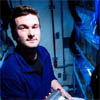
By Adam Crane, Postdoctoral Fellow, University of Saskatchewan

and Maud Ferrari, Associate Professor, University of Saskatchewan
Listen Ambient noise
These sounds are produced by the motion of the atmosphere, water and seafloor, by animals and, now more than ever, by machines created by humans.
Nowadays, the underwater soundscape includes the roar of motors, the ping of military SONAR and the bangs and blasts from offshore development.
Communication breakdown
For fish, whales and other marine animals, intense underwater noises from blasts can cause acoustic trauma and even death. More common quieter noise, such as construction or shipping noise, may not kill the animals directly, but can disrupt their ability to find food, mates or avoid predators.
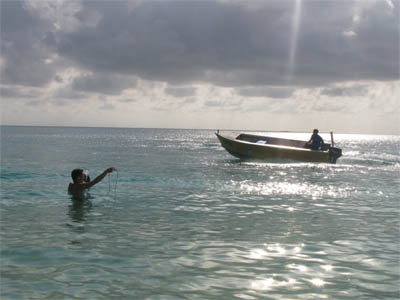
Researchers use a hydrophone to record and measure noise from a passing motorboat. Maud Ferrari
A wide range of species use acoustic signals to communicate with each other. Marine fishes, for instance, are known to make chirps, pops, knocks and grunts using their teeth, swim bladders or fins.
One consequence of anthropogenic — humanmade — noise is a masking effect. When the noise is close to a fish, it reduces that individual’s ability to hear the sounds of others. Noise also interferes with the sounds this individual produces, jamming communication.
School of noise
More and more, scientists are discovering that noise not only interferes with an animal’s cognitive processing of sounds, but also other types of stimuli, such as sight or smell. For example, boat noise interferes with the visual signals that cuttlefish use to communicate with each other.
Recent research in our lab indicated that noise can also impair an animal’s ability to process the chemical information released after a predator attack on shoal mates.
We looked at the effects of noise from small motorboats on coral-reef fishes at Lizard Island Research Station at the Great Barrier Reef in Australia. In the lab, we trained young damselfish to recognize the odour of the predatory dottyback as a threat. Some fish were trained in the presence of boat noise, while the others were trained with the ambient sound of the ocean.
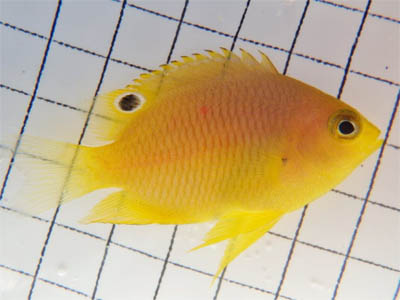
A juvenile Ambon Damselfish being measured for body size traits. (Maud Ferrari)
We found that fish trained with boat noise showed no fright reactions when they were exposed to the predator. It was as though they had had no preparation at all. The fish trained in the absence of boat noise, however, were scared. They reduced activity and foraging.
We taught another group of fish to recognize the smell and sight of three common predators — in the presence or absence of boat noise — and then we released them back into the wild.
School is out
It turns out that fish don’t learn very well in noisy environments. After three days, only 20 per cent of the fish exposed to boat noise were still alive, compared to almost 70 per cent of unexposed fish.
We often think of the ways climate change, overfishing and run-off pollution threaten fish populations in the Great Barrier Reef, but our study adds to the growing evidence that boat noise may also contribute to fish death through a failure to learn.
Boat noise can have a variety of negative impacts on fishes. It can change their activity, force them to live in bad habitats and decrease their ability to feed, defend their territory, reproduce and avoid predators.
In some places, such as biodiversity hotspots or sensitive habitats, it may be prudent to create rules or laws that minimize the impacts of noise. Approaches to mitigate the effects of boat noise may include the implementation of quiet zones, speed restrictions or the use of mufflers or low-volume engine models. For example, quiet zones were recently implemented in British Columbia to protect a population of killer whales.
Humans rely on the ocean for its biodiversity and natural resources. It also plays a fundamental role in regulating atmospheric temperatures and gases. Cousteau cared deeply about ocean conservation and was gravely concerned about ocean pollution and the over-harvest of marine life. Today’s seas continue to face these threats, as well as from habitat destruction, warming and ocean acidification.
These ocean threats are also human threats.
As Cousteau said, “For most of history, man has had to fight nature to survive; in this century he is beginning to realize that, in order to survive, he must protect it.”
Consumerism
I shop therefore I am
The Future Now Show
Shape the future now, where near-future impact counts and visions and strategies for preferred futures start. – Club of Amsterdam
Do we rise above global challenges? Or do we succumb to them? The Future Now Show explores how we can shape our future now – where near-future impact counts. We showcase strategies and solutions that create futures that work.
Every month we roam through current events, discoveries, and challenges – sparking discussion about the connection between today and the futures we’re making – and what we need, from strategy to vision – to make the best ones.
The Future Now Show
May 2018
the future of Financial Services
with
John Best
hosted by
Miss Metaverse
With an emphasis on maintaining the culture, services, and features you have carefully crafted for your customers over the years, these strategies allow you to make your organization more resistant to digital disruption by adopting key technologies at key points in their evolution. – John Best, author of Breaking Digital Gridlock
The Future Now Show
features
Tribalism – Security or Sovereignty?
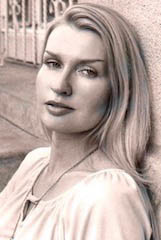
by Mara Lemanis
“When people have tried everything and have discovered that nothing works, they will tend to revert to what they know best – which will often be the tribe, the totem, or the taboo.”
– Christopher Hitchens

Having done work with the Great Plains Indians of South Dakota, I glimpsed a social contract different from the one that has become a major impasse across the globe. As a movement populism seeks to bulwark political cohesion based on a common cultural history and national identity. To the extent that it aspires to homogeneity of attitude, sentiment, and sense of purpose it also looks to secure itself against ethnic diversity as well as local elites.
In concerted opposition to a heterogeneous polity, populism claims prime legitimacy among its supporters and treats the opposition as illegitimate.
Its most trenchant form is evidenced in Poland, where the Law and Justice party (PiS) holds power, and Hungary, where Fidesz, the right-wing political party, proclaims “nationalism based on soil, blood, culture.” Hallmarks of democracy, such as a free press or media, and an independent judiciary, have been disabled or derailed.
Often the word “tribal” is used as a blanket description of an inflexible political stance based on the belief that it is genetically inherited. Harvard psychologist Steven Pinker ascribed the populist condition to the outcome of “our impulses of authoritarianism and tribalism.”
Countering this facile rhetoric of dependence on a metaphor that covers supremely nationalistic ambitions are the actual behaviors of tribes as researched and compiled by anthropologists.
Their studies show that the history of multiple, actual tribes does not conform to any concept about the deep-seated, organic nature of human society. Their analyses indicate nothing about a genetic cellular attribute, nor some instinctual inheritance that can never be modified or denied.
Unlike religious constructs or undifferentiated populist movements, the sense of identity among aboriginal cultures is much more fluid.
While nationalism is protectionist and anti-immigrant, tribal life has been disposed toward reciprocity both within and across different communities. Cultures such as the Native American tribes, the Berbers of North Africa, the Lozi of Central Africa, and the Mae Enja of Papua, New Guinea seek out enemy groups to advise them on selecting leaders and settling disputes.
Authentic tribes, documented by anthropologists, practice four kinds of social interaction:
” They often adopt outsiders into their community
” Marry members from opponent tribes
” Are anti-authoritarian and do not endorse absolute judgments.
” Avoid rigid structural identities in order to limit social isolation
The common feature among these modalities is the desire to prevent internal division since societies that cultivate inequality eventually destabilize and spur internal violence.
It has become common that the divisions among technological societies between working people and elites have been flouted as tribal allegiances and tribal enmity. Over the last generation this division has increasingly sharpened against immigrants, especially Muslims, and the political establishments that buttress them.
The glaring example of this has been in Hungary, where the prime minister’s popularity rose when he implemented a policy to keep out refugees. Other nations-Poland, Bulgaria, the Czech Republic, Slovakia-have followed suit.
A strong, underlying fear across Europe is that populations who consider themselves to be the ethnic natives and carriers of a legacy intrinsic to the cultural pride and legacy of their country are no longer dominant, are fast disappearing. Undeniably the undertow of economic downturns has led to stagnation in many European nations and caused the departure of their youth.
Sweden and Denmark believe their welfare systems are under threat from an influx of refugees. “Stop immigration and stop Islamization” has become an unabashed slogan making a blatant appeal.
Unlike the practice among aboriginal tribes in America and in numerous other regions of the world where cutting across cultures led to greater inclusion, the U.S., Britain, and Europe have been agitating for greater exclusion.
By advocating greater, not lesser participation in their governing councils the identity and sense of purpose for the Iroquois Confederacy in the U.S., as well as the Pashtuns in Pakistan and Afghanistan have been strengthened. By honoring opposing views and attitudes from disparate groups they have been able to arrive at consensus, thus increasing their self-determination.
Can there be any other paradigm for the world’s nations to build a stronger base within their borders?
How willing are they to expel those immigrants now residing within their borders or repel the ones without? Would they be willing to corral the growing populace of displaced migrants and herd them into a ghetto or conduct them to some desolate island while defraying the cost of their sustenance?
Finally what can be the meaning of a social contract that withdraws from its original principles and goals to shrink toward a narrow welfare, a hardened core solely protecting self-proclaimed nativists?
Then what sort of humanity does a social contract espouse?
These are questions that might be posed to all of us in all the nations of our world.
The signing of the Mayflower Compact – a basic set of rules between the Native American tribes and the Colonists at Plymouth, Massachusetts.
News about the Future
My Vote‘s ambition is to build a secure online voting platform that will allow for greater election transparency. MyVote is a web-based application that enables you to create ranking, rating, and poll voting contests and view the results in real time. The audience can participate live on their mobile phones, tablets and desktops. There is nothing to download or install.
Blockchain technology already secures billions of dollars around the world. We believe it should secure our votes as well. Using the unparalleled security of blockchain technology, we are poised to disrupt the established voting industry by offering a more cost-effective and technologically superior solution.

The Next Wave Of Tech-For-Good Companies Are Being Built By Women And Minorities
A new report by Fast Forward looks at the demographics of so-called “tech nonprofits.” That report, entitled “The State of Diversity and Funding in the Tech Nonprofit Sector,” shows that 47% of all tech nonprofit founders are women, compared to just 17% at traditional startups. Minorities make up 30% of all tech nonprofit founders compared to 13% in the for-profit field. Just what earns a nonprofit that “tech nonprofit” distinction could be the subject of its own debate. “We classify a tech nonprofit as a tech company building original software or hardware, but leveraging a nonprofit business model so they can focus 100% on social impact,” notes report co-author Christina Shatzen.
Resilient by Design
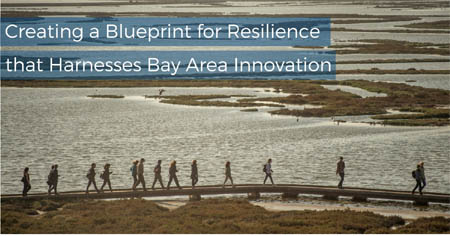
www.resilientbayarea.org
A year-long collaborative design challenge bringing together local residents, public officials and local, national and international experts to develop innovative community-based solutions that will strengthen our region’s resilience to sea level rise, severe storms, flooding and earthquakes.
The BIG + ONE + Sherwood Team is co-led by Bjarke Ingels Group (BIG), One Architecture + Urbanism (ONE), and Sherwood Design Engineers (Sherwood). The team also includes experts from Moffat & Nichol, Nelson Nygaard, Strategic Economics, and The Dutra Group. The Team brings together significant international experience in Denmark, the Netherlands, and the Bay Area with a variety of experience in designing spaces that are vulnerable to climate events by understanding a region’s economic, political and social environment.
The Team is founded on a shared belief in the power of well-designed spaces that are connected to their contexts – ecologically, economically, and socially – and overall play a transformative role in the cities where they are located. With a collective commitment to embrace the interconnected, rich, and diverse set of human and non-human ecosystems that comprise the Bay Area, the BIG + ONE + Sherwood Team looks at the city as a Social Ecosystem – one where we can proactively design the links between nature, and culture, between people, and their environment.
Recommended Book

The Future
by Nick Montfort
How the future has been imagined and made, through the work of writers, artists, inventors, and designers.
The future is like an unwritten book. It is not something we see in a crystal ball, or can only hope to predict, like the weather. In this volume of the MIT Press’s Essential Knowledge series, Nick Montfort argues that the future is something to be made, not predicted. Montfort offers what he considers essential knowledge about the future, as seen in the work of writers, artists, inventors, and designers (mainly in Western culture) who developed and described the core components of the futures they envisioned. Montfort’s approach is not that of futurology or scenario planning; instead, he reports on the work of making the future – the thinkers who devoted themselves to writing pages in the unwritten book. Douglas Engelbart, Alan Kay, and Ted Nelson didn’t predict the future of computing, for instance. They were three of the people who made it.
Montfort focuses on how the development of technologies – with an emphasis on digital technologies – has been bound up with ideas about the future. Readers learn about kitchens of the future and the vision behind them; literary utopias, from Plato’s Republic to Edward Bellamy’s Looking Backward and Charlotte Perkins Gilman’s Herland; the Futurama exhibit at the 1939 New York World’s Fair; and what led up to Tim Berners-Lee’s invention of the World Wide Web. Montfort describes the notebook computer as a human-centered alterative to the idea of the computer as a room-sized “giant brain”; speculative practice in design and science fiction; and, throughout, the best ways to imagine and build the future.
Processed Food

Dr. Robert Lustig believes the food business, by pushing processed food loaded with sugar, has hacked our bodies and minds to pursue pleasure instead of happiness; fostering today’s epidemics of addiction and depression. Yet by focusing on real food, we can beat the odds against sugar, processed food, obesity, and disease.

The Hacking of the American Mind
The Science Behind the Corporate Takeover of Our Bodies and Brains
Lustig, Robert H.
“We all know that we can’t put down our sodas or our cell phones. But what if these cravings are engineered — by design? And what if these desires actually cause damage — not just to ourselves, but to our families, our friends, and our entire society? While researching the toxic impact of sugar on our health for his New York Times best seller Fat Chance, Robert Lustig made a discovery that reaches beyond the politics of food. Our seemingly innocent addictions are far from it — they are biochemical, and they are damaging our bodies and our brains. With his trademark wit and incisiveness, Lustig reveals how these chemicals interact with one another to drive our behaviors, and how Big Business uses the science of addiction to keep us hooked — to our detriment, and for their profit. Dopamine is the ‘reward’ neurotransmitter that tells our brains ‘This feels good, I want more.’ Yet too much dopamine leads to addiction. Serotonin is the ‘contentment’ neurotransmitter that tells our brains ‘This feels good, I have enough.’ Yet too little serotonin leads to depression. Ideally, both should be in optimal supply. But too many of our simple pleasures have morphed into something else — a 6.5-ounce soda has become a Big Gulp; an afternoon with friends has been replaced by 1,000 friendings on Facebook. What we think we want, what we’re told will bring us happiness, is just a clever marketing scheme to lead us to consume more and more. Wall Street, Madison Avenue, Las Vegas, Silicon Valley, and Washington, DC., have gotten inside our heads, exploiting newly discovered brain physiology and chemistry to confuse and conflate pleasure with happiness. Our behaviors are not our own, because our minds have been hacked. But there are ways to reclaim our health and our lives. Using that same brain science, Lustig offers solutions to defend ourselves against Corporate America, and to reengage in the pursuit of happiness, even in the face of overwhelming opposition. And the time to take action — for ourselves, for our children, and for all of society — is now.” — Jacket.
Dr. Robert LustigThe Hacking of the American Mind at the San Francisco Public Library
Futurist Portrait: John Renesch

John Renesch is an advisor, mentor, futurist and writer on matters of social and organizational change. He believes that commerce holds the key to bringing about a global shift of human consciousness thus creating a future of tremendous possibility for humankind – the possibility that will allow humanity to transcend the inevitable future that can be projected from current trends.
(…) John: “It is so easy to give lip service to doing the right thing, stating the moral high ground, saying what people want to hear but an entirely different moral toughness is required to keep our word – to do what we say we are going to do. After years of hearing these tentative “commitments” the rest of us have gotten used to people reneging on their promises and not keeping their word. The worst of it? It has become “socially acceptable”; that is, we have grown accustomed to people failing to do what they say and we let them off the hook. Empty promises have become quite common. (…) –Journal of Values-Based Leadership
(…) John: “Coaching leaders in consciousness requires a unique approach since the subject is ineffable. It requires a non-linear holistic approach that defies straight fact-learning or skill enhancing.” (…) – Coaching Psychology International









Customer Reviews
Thanks for submitting your comment!